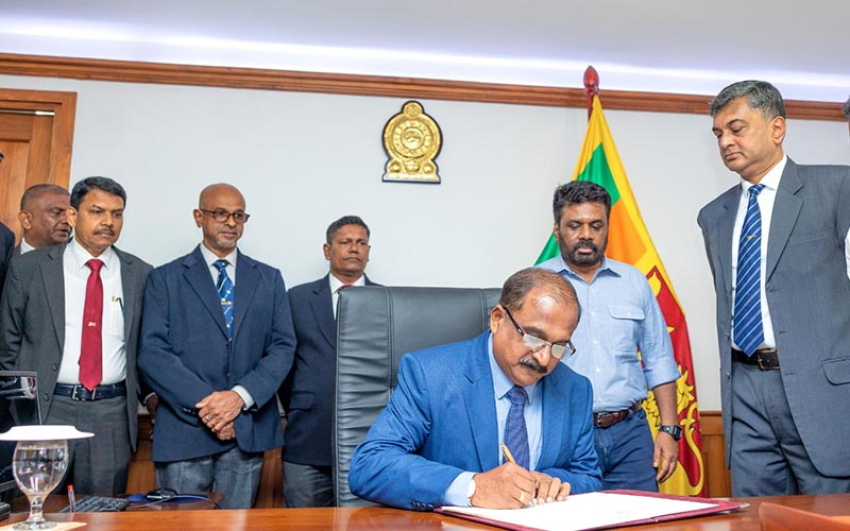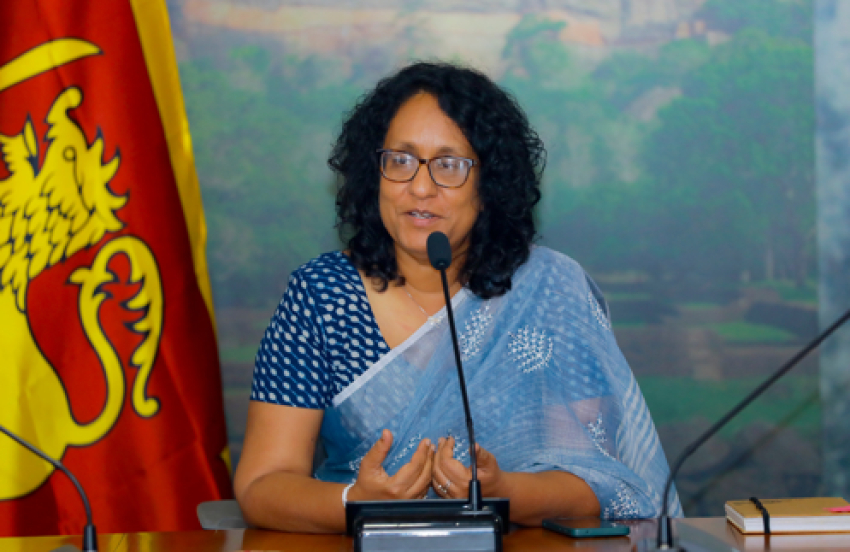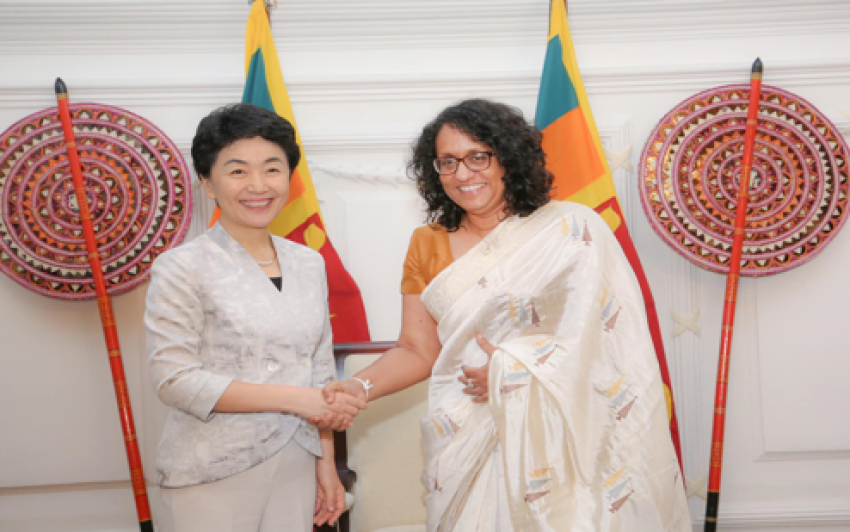For Hindus world over Maha Siva Rathri is purely a religious observance of day-time fast and vigilance throughout the night. They observe these special rites on the fourteenth night of Phalguna (February/March) which is the longest night in the year according to the Hindu calendar. This year it falls on March fourth (today).
Observances are started in the morning on the festive day and continued throughout the night in a bid to wash away the sins and pave way for eternal bliss through basic religious disciplines of Ahimsa (non-injury) Satya (truthfulness), Brahmacharya (celibacy), Daya (compassion), Kshama (forgiveness)and Anissa (absence of jealousy)
A solemn occasion to worship Lord Siva
Maha Siva Rathri is a solemn occasion to worship Lord Siva who is regarded as the ocean of love, the ocean of knowledge, the ocean of peace and ocean of happiness. God Siva is formless (Arupa).
However, out of love for devotees, he appears in the form of luminous light arising out of Siva Lingam. He takes form in this way for the sake of devotees who will otherwise be left in the perpetual darkness
Origin of Siva Rathri
The origin of Siva Rathri is explained in Purani legends
In the war between Suras (Gods) and Asuras demons or Titans,) gods were likely to be defeated at one stage. So, the gods got around their saviour god Vishnu and begged him to find a way to defeat the Asuras who were unrighteous and unlawful. While god Siva was contemplating a plan to defeat Asuras the exact way to win over the Asuras came to his mind. He felt that if they could find a way they could find Amirtha the medicine of immortality- the ambrosia the Asuras could be defeated because in that case, gods could remain immortal. God Siva told god Vishnu about the plan and it was in action. Ambrosia or Nectar was deposited in the bed of the milk sea. The Milk sea had to be churned to bring the medicine of immortality to the surface. God Vishnu pulled out Mandara rock and entwined it with Naga king Wasuki and started churning the Milk sea by pulling from the head and tail of the Naga king Wasuki with the assistance of the other gods.The valuable items that came to the surface of the Milk Sea
Several rare and valuable items came to the surface. Lakshmi, the goddess of fortune and prosperity was one of them. The delightful cow, the fabulous cow said to grant every wish was another item. Kapruka, the celestial tree and Ambrosia or the medicine of immortality which the gods needed most also came to the surface, but the virulent poison called Halahala was also there. Gods knew that this poison could be used by Asuras to destroy the whole universe if it was to go to their hands
Neela Greeva – an appellation for God Siva
Hence god Siva gulped it down before Asuras could have access to it. Instantly god Siva was unconscious and swooned. However, the poison disappeared in a moment, but god Siva’s neck turned blue because the poison remained in his throat for some time. Hence “Neela Greeva” is an applanation for god Siva. All the gods assembled around “Kailasakuta” to sing eulogistic songs for saving the universe from Asuras. (Demons)
"Today Hindus observe Maha Sivarathri
Devotees pray to be released from the cycle of samsara Women pray for the well-being of husbands; while the unmarried pray for an ideal husband"
Harp- the musical instrument created by Ravana
There is evidence that harp is a musical instrument created by Ravana- the supreme lord of Lanka. This is an interesting story related to god Siva and goddess Parvathy. One day Ravana composed a marvellous canticle. He wanted to recite that canticle before god Siva. However, god Siva was not to be seen on Kailasakuta. To be free from gods who visited him without an end he had hidden under a cloud and was relaxing with goddess Parvathy. Ravana was so anxious to recite the canticle that he went close to the cloud in which god Siva was staying and stretched his hand in a bid to draw the attention of god Siva although his intention was not to disturb him, god, Siva was not happy about Ravana’s intrusion and to punish him he pressed his hand to the cloud until the veins came out. It is said that Ravana had produced music using the veins of his hand as strings. Presumably, it was in this manner that “Veena”- the Indian lute had come into being.
How the Sivarathri festival
is celebrated
To mark the Sivarathri festival devotees wake up early, take a ritual bath, and after wearing fresh new clothes go to the nearest Siva temple for Abhishekam or anointing the Siva lingam with milk, honey, ghee, sugar and water. In the temple, the priest performs Poojas every three hours ringing temple bells.
Devotees spend the night singing hymns and chanting Manthras. Flowers and leaves are used in performing Pujas. Devotees especially include the leaves of the Vilva (Beli) Tree because it is believed that the meritorious effect of the leaves of the Vilva tree is more.
Rituals of Maha Sivarathri
Tripundara refers to the three horizontal stripes of holy ash applied to the forehead by worshippers of Lord Siva. These stripes symbolize spiritual knowledge, purity and penance (Spiritual practice of yoga), so also, they represent the three eyes of Lord Siva.
The seed of the Rudraksha tree is said to have sprung the tears of Lord Siva.
Devotees use the seed of the Rudra Raksha tree when worshipping Lord Siva as it is ideal to wear the seed of Rudraksha tree. Rudraksha is reddish in colour with yellow stripes.
On Siva Rathri only cold water and bale leaves are offered to the Siva. Other traditional offerings such as bathing in milk and Panchmukhi (A mixture of milk, curd, ghee and honey) or anointing it with white consecrated rice (Akshata symbols of fertility or creation) are not done on this day when Lord Siva is worshipped as the deity of dissolution.
Night time quarterly Poojas
Usually, pooja ceremonies are conducted quarterly pooja or Muthalam Sumam commence at 8.00 p.m. Lotus flowers are given preference in the first quarter pooja. For this pooja, one hundred and eight water kumkums are used.
At 10.30 p.m. the second quarter ritual commences. This pooja is performed with forty-nine water kumkums. In the second quarter, Pooja Beli leaves are given preference. The most important part of the Sivarathri ceremony is performed during the third quarter commencing at midnight.
This is called Linootpava pooja. It is believed that Lord Siva although formless reveals himself in the form of glowing light before devotees.
This is an exalted and holy occurrence which is a rare gift for devotees, and it is the climax of the ceremony where five priests participate with five kumbams.
The fourth quarter ceremony called Nankam Samam is the last and the auspicious part which commences at 3.00 a.m. and comes to an end at dawn. During this session of pooja, Senguluneer flowers are used.
Prayers in the morning and evening
Apart from all night poojas, devotees attend to prayers in the morning and the evening at home or in the parks or rivers flowing by the side of temples. Devotees recite Sanskrit verses throughout the day and night. Some devotees keep awake the whole night.
Hopes to attend Mukthi or salvation
Through worshipping and meditation during the Sivarathri devotees hope to attain” Moksha’ or salvation. For the liberation from the cycle of rebirth and pain or suffering Gautama Buddha enunciated the Four Noble Truths “Chaturarya Satya” and showed the way for the liberation by following the Eight-fold path “Arya Atthangika Marga” and attaining Nibbana
Lord Siva guides man in the Spiritual Path
Lord Siva guides man in the spiritual path. Sivarathri is especially auspicious for women. Married women pray for the wellbeing of their husbands, while the unmarried pray for husbands like Lord Siva, who is regarded as the ideal husband.
It is believed that a man who indulges himself on holy thoughts can achieve salvation Mukthi and Mahasivarathri is the best opportunity for laymen to engage in prayers and fasting and. seek divine favours to achieve the state of Mukthi through participation.




















